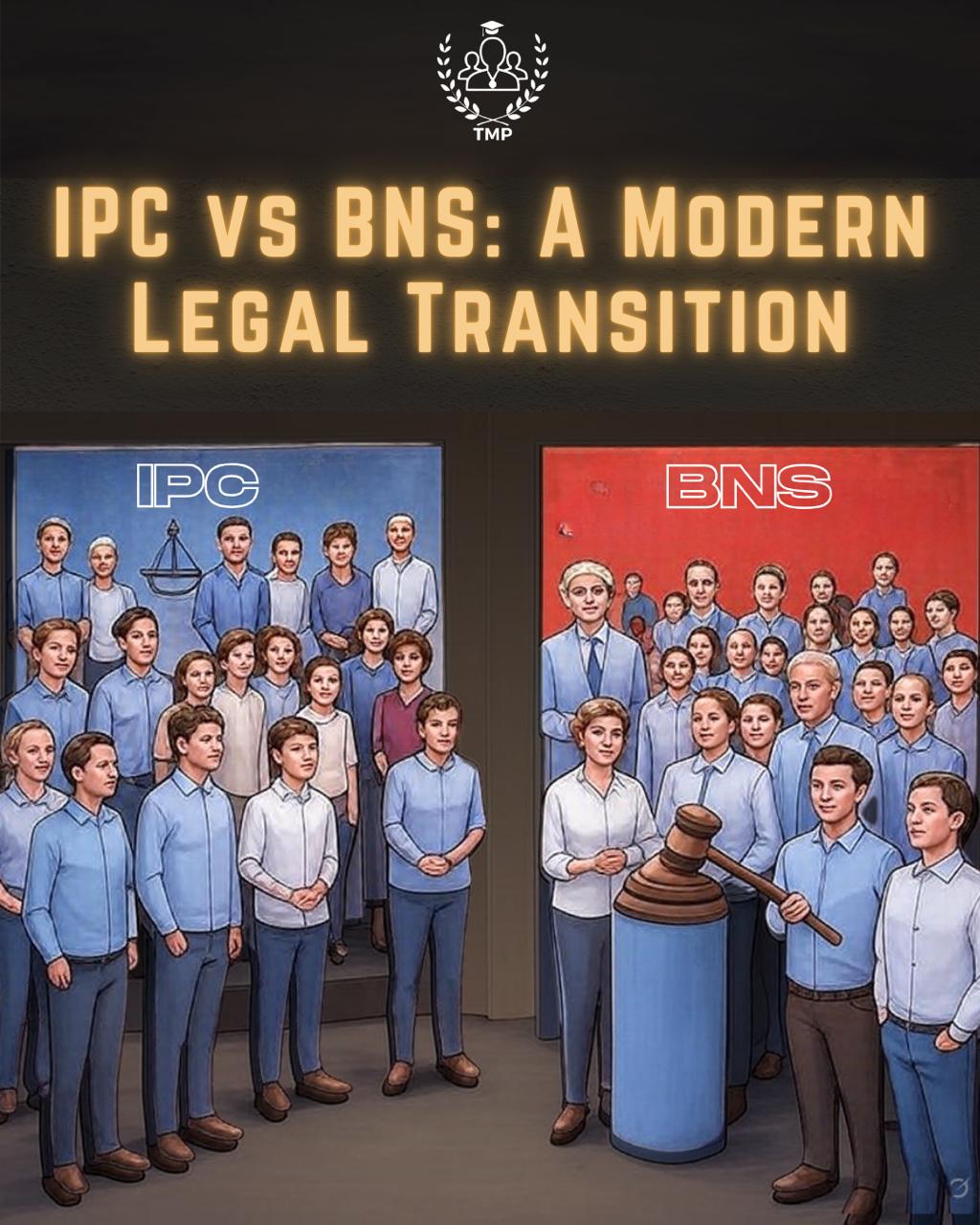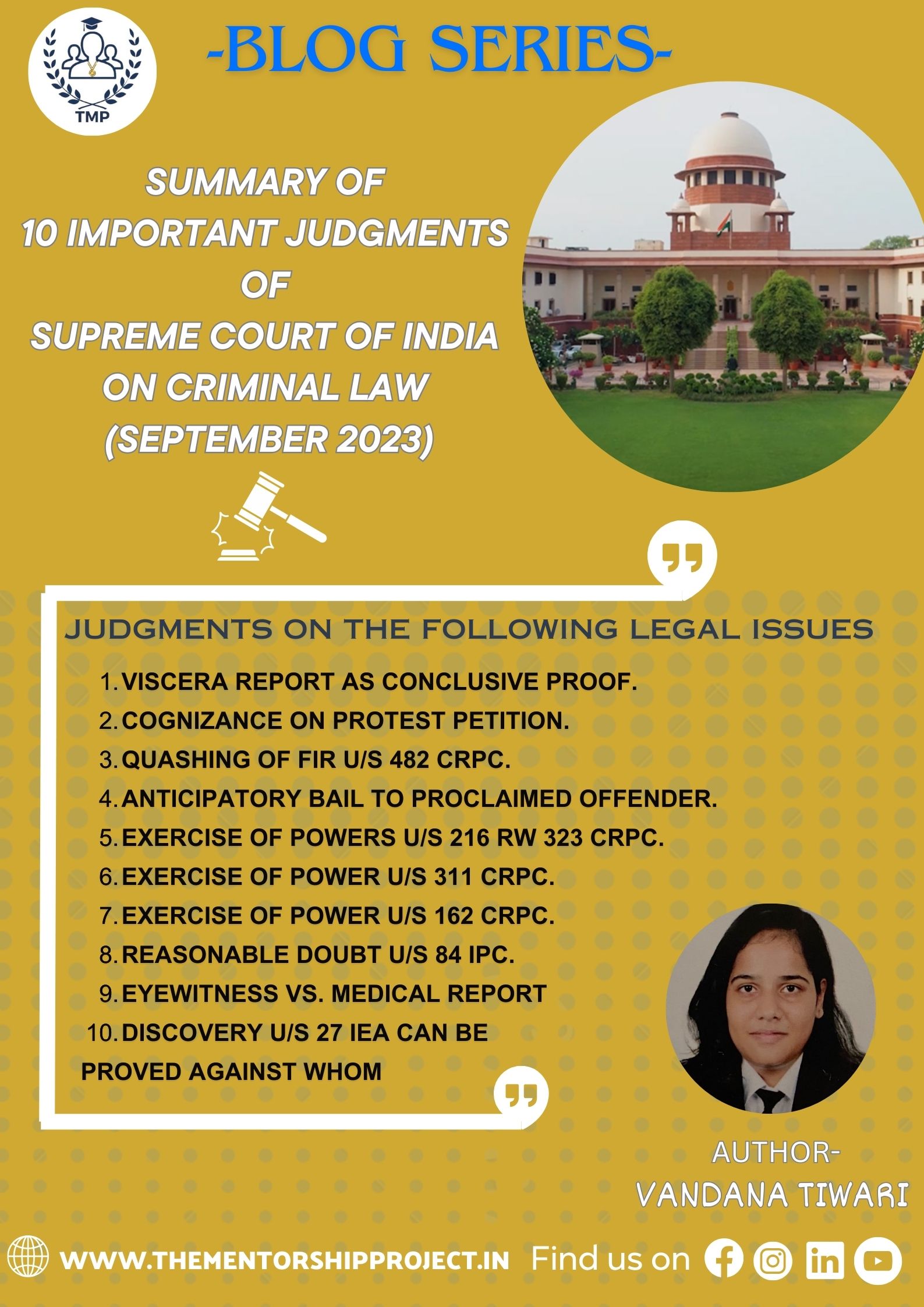April 26 , 2025
A Comparative Study of the Indian Penal Code (IPC) and the Bhartiya Nyaya Sanhita (BNS)
Introduction: A New Era in Criminal Law
The Indian Penal Code (IPC), which had been the cornerstone of India’s criminal justice system since 1860, has now been replaced by the Bhartiya Nyaya Sanhita (BNS). This marks a significant transformation in India’s legal framework, aiming to modernize criminal law and make it more effective, victim-centric, and responsive to contemporary socio-legal issues. The BNS seeks to address longstanding criticisms of the IPC by introducing reforms that ensure justice is administered efficiently while balancing the rights of victims and the accused. Among the numerous changes it introduces, three stand out as particularly crucial: the addition of community service as a form of punishment, the explicit recognition of mob lynching as a distinct crime, and the reformation of sedition laws. This study will critically analyze these reforms, evaluating whether the BNS successfully corrects the IPC’s flaws or if it introduces new challenges that require careful consideration.
Rehabilitation Over Incarceration: Community Service as Punishment
One of the most transformative changes in the BNS1 is the formal recognition of community service as a punishment for minor offenses. Under the IPC, penalties were largely punitive, consisting mainly of imprisonment and monetary fines. This often resulted in overcrowded prisons, unnecessary incarceration of first-time or petty offenders, and a lack of rehabilitative efforts. The BNS introduces community service as an alternative, focusing on reformation rather than mere punishment. This change is in line with modern criminal justice principles, which emphasize rehabilitation over retribution.2 By allowing minor offenders to engage in socially beneficial work rather than serve jail time, the BNS not only prevents unnecessary imprisonment but also instills a sense of responsibility and accountability in offenders. This reform is particularly relevant in light of the Supreme Court’s decision in Hussainara Khatoon v. State of
Bihar (1979)3, which underscored the importance of speedy trials and humane treatment of prisoners. However, for this provision to be effective, a robust framework must be established to monitor compliance and ensure that offenders fulfill their community service obligations. Law enforcement agencies and judicial officers must also be adequately trained to implement this reform efficiently.4
Recognizing Mob Lynching as a Distinct Crime
Mob lynching, a phenomenon that has increasingly threatened social harmony in India, has now been explicitly recognized as a distinct crime under the BNS. Previously, under the IPC, cases of mob violence were prosecuted under general provisions related to murder, rioting, and unlawful assembly, often leading to inconsistent legal outcomes. Mob lynching typically occurs when a group of people takes the law into their own hands, meting out vigilante justice based on rumors, misinformation, or communal biases. This often results in extreme violence and human rights violations. By categorizing mob lynching as a separate offense and prescribing stringent penalties—including life imprisonment and, in extreme cases, the death penalty—the BNS ensures that such acts are treated with the seriousness they deserve.5 This move aligns with the Supreme Court’s ruling in Tehseen S. Poonawalla v. Union of India (2018)6, which called for stringent legal measures to curb mob lynching and mandated accountability for law enforcement agencies. While this provision strengthens legal deterrence, its effectiveness will depend on the ability of the police and judiciary to swiftly investigate and prosecute cases. Ensuring fair and unbiased enforcement is crucial, as incidents of mob violence often have deep-seated political and communal undertones.
Redefining Sedition: Balancing Security and Civil Liberties
The BNS introduces significant changes to the controversial sedition law, which had long been criticized for its vague definition and potential for misuse. Under the IPC, Section 124A criminalized any speech or action that brought “disaffection” toward the government, leading to widespread concerns about the suppression of dissent and freedom of expression. The BNS replaces this provision with a more precise framework that focuses on acts that genuinely threaten national security, rather than broadly criminalizing criticism of the government. This change aligns with the Supreme Court’s judgment in Kedar Nath Singh v. State of Bihar (1962)7, which clarified that sedition could only be invoked if speech incited violence or public disorder8. By refining the scope of sedition laws, the BNS aims to prevent arbitrary legal action against political dissenters while still addressing genuine threats to the nation’s security. However, much will depend on how authorities interpret and implement these provisions. If misused, even the revised law could continue to be a tool for suppressing dissent, making judicial oversight crucial in ensuring its fair application.
A Victim-Centric and Modernized Legal Approach
The BNS marks a shift toward a more victim-centric criminal justice system, prioritizing the rights of victims and streamlining legal procedures to ensure timely justice. One of the long-standing criticisms of the IPC was the slow pace of criminal trials, which often left victims feeling neglected and frustrated. By simplifying procedural laws and ensuring swifter case resolutions, the BNS aims to make justice more accessible. Furthermore, the new code updates criminal law to include contemporary offenses such as organized crime and cybercrimes, which were inadequately addressed under the IPC. The inclusion of these provisions reflects an awareness of modern threats and ensures that India’s legal system is better equipped to tackle emerging challenges. While these reforms are commendable, their success will depend on strong implementation mechanisms. Law enforcement agencies, prosecutors, and judicial officers must undergo extensive training to effectively apply the new legal provisions. The government must also invest in strengthening investigative and judicial infrastructure to prevent delays in justice delivery.
Conclusion: Progress with Challenges Ahead
The transition from the IPC9 to the BNS represents a monumental shift in India’s criminal justice system. By addressing key flaws in the IPC and incorporating provisions that reflect the realities of modern society, the BNS takes significant strides toward a more effective and just legal framework. However, the success of these reforms will depend on their implementation. While the introduction of community service as a punishment helps in prison decongestion and rehabilitation, it requires a well-defined structure for monitoring compliance. The explicit recognition of mob lynching as a distinct crime strengthens legal deterrence, but its enforcement must remain free from political and communal biases.10 The revision of sedition laws brings clarity and safeguards against misuse, yet it remains vulnerable to potential misinterpretation.
Ultimately, the BNS lays the foundation for a more balanced and contemporary legal system, but its true impact will be determined by judicial interpretation, law enforcement efficiency, and continued legal scrutiny. As India progresses with this new legal framework, continuous monitoring and periodic revisions will be essential to ensure that the criminal justice system remains fair, just, and responsive to evolving societal needs.
(Author- Latika Raghav, Student at Fairfield Institute of Management and Technology, IP University. Views expressed are personal)
Citations
1 The Bhartiya Nyaya Sanhita, No. 45 of 2023, INDIA CODE (2023).
2 Law Comm’n of India, 267th Report on Amendments to Criminal Law (2017).
3 Hussainara Khatoon v. State of Bihar, (1979) 3 S.C.C. 532 (India).
4 Ministry of Home Affairs, Government of India, Report on Prison Statistics in India 2021, NAT’L CRIME RECORDS BUREAU (2022).
5 Law Comm’n of India, 273rd Report on Implementation of Laws to Curb Mob Lynching (2017).
6 Tehseen S. Poonawalla v. Union of India, (2018) 9 S.C.C. 501 (India).
7 Kedar Nath Singh v. State of Bihar, A.I.R. 1962 S.C. 955 (India).
8 Gautam Bhatia, Free Speech and the Constitution of India: The Sedition Debate, 54(3) ECON. & POL. WKLY. 15 (2019).
9 The Indian Penal Code, No. 45 of 1860, INDIA CODE (1860).
10 Upendra Baxi, Crisis of the Indian Legal System, 26 J. INDIAN L. INST. 1 (1984).









